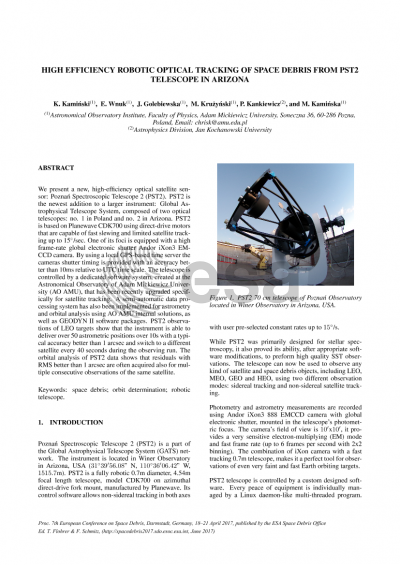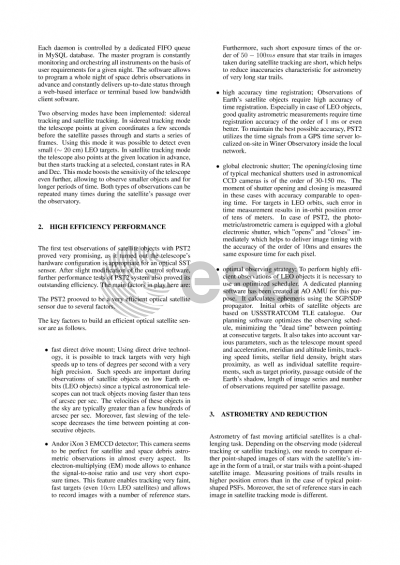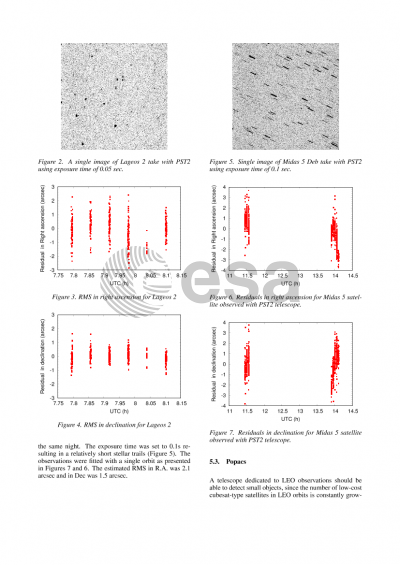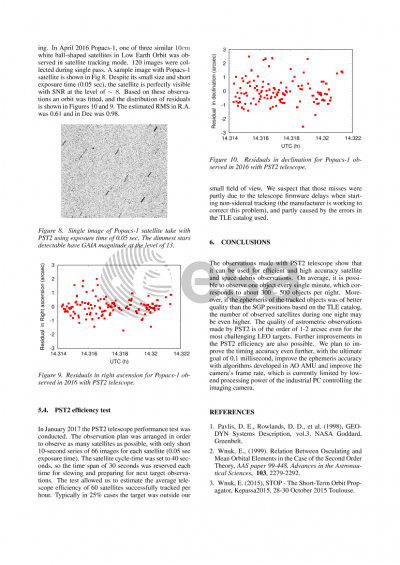Document details

Abstract
We present a new, high-efficiency optical satellite sensor: Pozna? Spectroscopic Telescope 2 (PST2). It is the newest addition to a larger instrument: Global Astrophysical Telescope System, composed of two telescopes: no. 1 in Poland and no. 2 in Arizona. PST2 is a fully robotic 0.7m corrected Dall-Kirkham, dual Nasmyth focus, multi-purpose telescope. It uses an azimuthal fork mount, equipped with direct-drive motors, that are capable of fast slewing and satellite tracking up to 15°/sec. One of its foci is equipped with a high frame-rate global electronic shutter Andor iXon3 EMCCD camera delivering 10' x 10' field of view. By using a local GPS-based time server the camera’s shutter timing is provided with an accuracy better than 1ms relative to UTC time scale. The telescope is controlled by a dedicated software system created at our Observatory that has been recently upgraded specifically for satellite tracking. A semi-automatic data processing system has also been implemented for astrometry and orbital analysis using our internal solutions as well as astrometry.net and GEODYN II software packages. PST2 observations of LEO targets show that the instrument can determine over 100 astrometric positions over 40s with an accuracy better than 1 arcsec and switch to a different satellite every 2 minutes during the observing run. Orbital analysis of PST2’s data show that residuals with RMS better than 1 ascsec are often acquired also for multiple consecutive observations of the same satellite.
Preview






